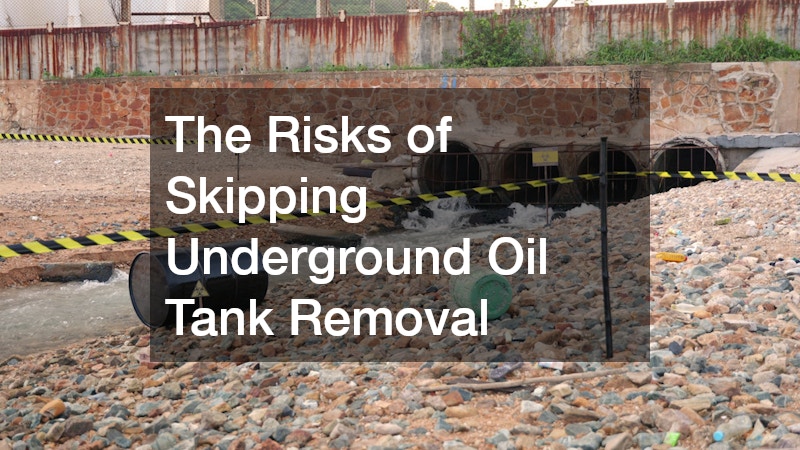Underground oil tanks were once common installations for residential and commercial properties. As environmental awareness has grown, the risks associated with these tanks have become more apparent. As property owners face the decision of what to do with these relics of the past, understanding the dangers of skipping underground oil tank removal is crucial.
Left unattended, underground oil tanks can pose significant environmental hazards. The decision to remove these tanks is often postponed due to perceived high costs and inconvenience.
However, the long-term consequences of leaving an underground oil tank in place can be far more detrimental and costly.
Beyond the risks of soil contamination and groundwater pollution, there are also legal and financial repercussions. Property owners might face fines, decreased property values, and difficulties in selling their homes.
Environmental Concerns
One of the primary risks of neglecting underground oil tank removal is environmental degradation. Tanks that have been left in the ground for decades are susceptible to corrosion and leaks. Over time, these leaks can lead to the contamination of the surrounding soil, threatening local ecosystems.
Contaminated soil can have a ripple effect, affecting not only the immediate area but also nearby water sources. This contamination can extend to groundwater, which many communities rely on for drinking water. As a result, the presence of a neglected oil tank can contribute to significant and widespread environmental harm.
Addressing the contamination caused by an underground oil tank leak can be far more expensive than removing the tank in the first place. Mitigation efforts may require extensive soil excavation and treatment, not to mention potential regulatory fines. Proactive underground oil tank removal can prevent these costly consequences.
Legal and Financial Repercussions
Ignoring the need for underground oil tank removal can also result in legal and financial challenges. Many local and state regulations mandate the removal of old or unused oil tanks. Failure to comply with these regulations can result in significant fines and legal battles.
In addition to legal penalties, property values may also suffer. Prospective buyers are often wary of purchasing properties with existing environmental hazards or liabilities. Consequently, homeowners who delay removal may find it difficult to sell their property at a competitive price.
Long-term financial burdens can also include increased insurance premiums and potential lawsuits if leakage affects neighboring properties. Proactively addressing the issue through underground oil tank removal can safeguard property owners from these risks, preserving both financial stability and peace of mind.
Health Risks
The presence of an underground oil tank poses not only environmental and financial risks but also potential health hazards. Leaked oil from corroding tanks can lead to harmful vapors seeping into basements, affecting indoor air quality. Prolonged exposure to these vapors can cause health issues for residents, particularly for children and those with pre-existing conditions.
Additionally, contamination of local water sources from an oil tank leak can pose serious health risks to communities. Consuming or using contaminated water can lead to a variety of medical issues, from skin irritation to more severe systemic disorders. The protection of public health is a strong incentive for the timely underground oil tank removal.
Taking measures to remove these tanks helps mitigate these potential health risks, ensuring a safer environment for residents and their neighbors. Property owners owe it to their families and communities to prioritize health by addressing this often-overlooked hazard.
The risks of skipping underground oil tank removal are significant and multifaceted. From environmental degradation and legal issues to potential health hazards, the consequences can be severe and far-reaching. The initial inconvenience and cost of removal are minor compared to the potential repercussions of leaving a tank unattended.
Proactive removal not only abates environmental concerns but also protects homeowners from substantial financial and legal liabilities. For communities, the benefits include cleaner environments and safer living conditions. Overall, addressing the presence of an underground oil tank is a critical step in safeguarding the future.
As property owners, understanding and mitigating these risks through timely removal is of utmost importance. By taking action, homeowners contribute to the protection of their land, their finances, and their community’s health. Ultimately, the decision to remove an underground oil tank is an investment in safety, environmental stewardship, and peace of mind.
.




